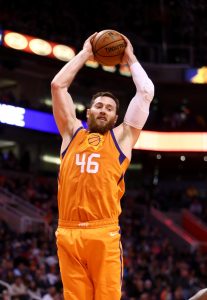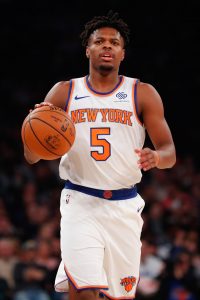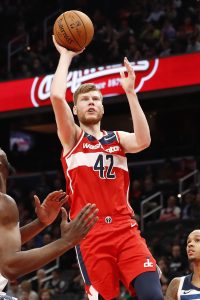When a top college prospect is drafted, it’s generally a given that his next step will involve signing an NBA contract. However, that’s not the case for every player who is selected in the NBA draft, especially international prospects and second-round picks.
When an NBA team uses a draft pick on a player, it gains his NBA rights, but that doesn’t mean the player will sign an NBA contract right away. International prospects will often remain with their professional team overseas for at least one more year to develop their game further, becoming “draft-and-stash” prospects. Dario Saric, Bogdan Bogdanovic, and Tomas Satoransky are among the more notable players to fit this bill over the last decade.
However, draft-and-stash players can be former NCAA standouts too. Sometimes a college prospect selected with a late second round pick will end up playing overseas or in the G League for a year or two if there’s no space available on his NBA team’s 15-man roster. This was the case for former Gonzaga standout Nigel Williams-Goss, who was drafted by the Jazz in 2017 but didn’t join the NBA team until 2019.
While these players sometimes make their way to their NBA teams, others never do. Many clubs currently hold the NBA rights to international players who have remained overseas for their entire professional careers and are no longer viewed as top prospects. Those players may never come stateside, but there’s often no reason for NBA teams to renounce their rights — those rights can sometimes be used as placeholders in trades.
For instance, during the 2019 offseason, the Warriors and Timberwolves agreed to a trade that sent Treveon Graham, Shabazz Napier, and cash to Minnesota. For Golden State, the deal was just about getting off a pair of guaranteed salaries and remaining under the hard cap, but the Wolves had to send something to the Warriors in the deal. Rather than including an NBA player or a draft pick, Minnesota sent Golden State the draft rights to Lior Eliyahu, the 44th pick in the 2006 NBA draft.
Eliyahu, who is currently playing for Maccabi Ashdod in Israel, has had a long, decorated career overseas, but he’s 34 years old and at this point is unlikely to ever come to the NBA. Still, his draft rights have been a useful trade chip over the years — he was also included in a Rockets/Timberwolves deal back in 2012.
Listed below are all the players whose NBA draft rights are currently held by NBA teams. A few of these players will eventually arrive in America and join their respective NBA clubs, but many will end up like Eliyahu, plying their trade overseas and having their draft rights used as pawns in NBA trades.
Atlanta Hawks
- Augusto Binelli, C (1986; No. 40): Retired.
- Alain Digbeu, F (1997; No. 49): Retired.
- Marcus Eriksson, G/F (2015; No. 50): Playing in Germany.
- Alpha Kaba, C (2017; No. 60): Playing in France.
Boston Celtics
- None
Brooklyn Nets
- Christian Drejer, F (2004; No. 51): Retired.
- Nemanja Dangubic, F (2014; No. 54): Playing in Spain.
- Juan Vaulet, F (2015; No. 39): Playing in Spain.
- Aaron White, F (2015; No. 49): Playing in Spain.
- Isaia Cordinier, G (2016; No. 44): Playing in France.
- Aleksandar Vezenkov, F (2017; No. 57): Playing in Greece.
- Jaylen Hands, G (2019; No. 56): Playing in the G League.
Charlotte Hornets
- Arnoldas Kulboka, F (2018; No. 55): Playing in Spain.
Chicago Bulls
- Albert Miralles, C (2004; No. 39): Retired.
- Jon Diebler, G (2011; No. 51): Last played in Turkey.
 Furkan Korkmaz
Furkan Korkmaz

